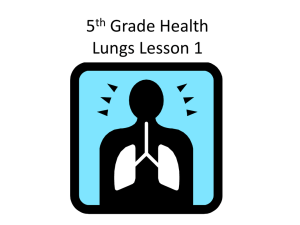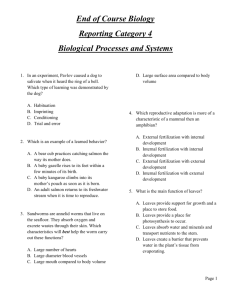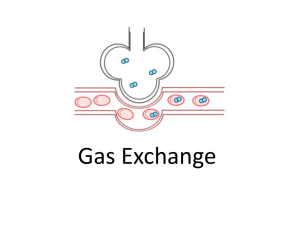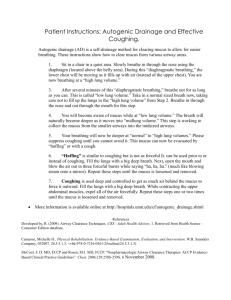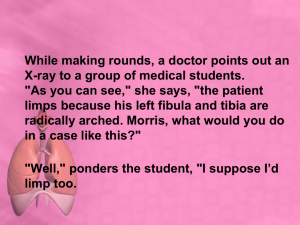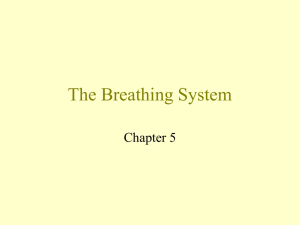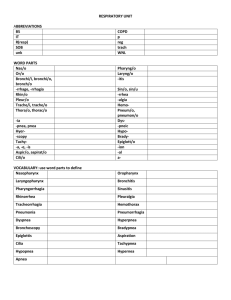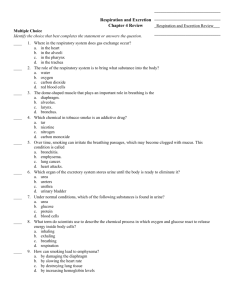B6.2 Revision notes
advertisement
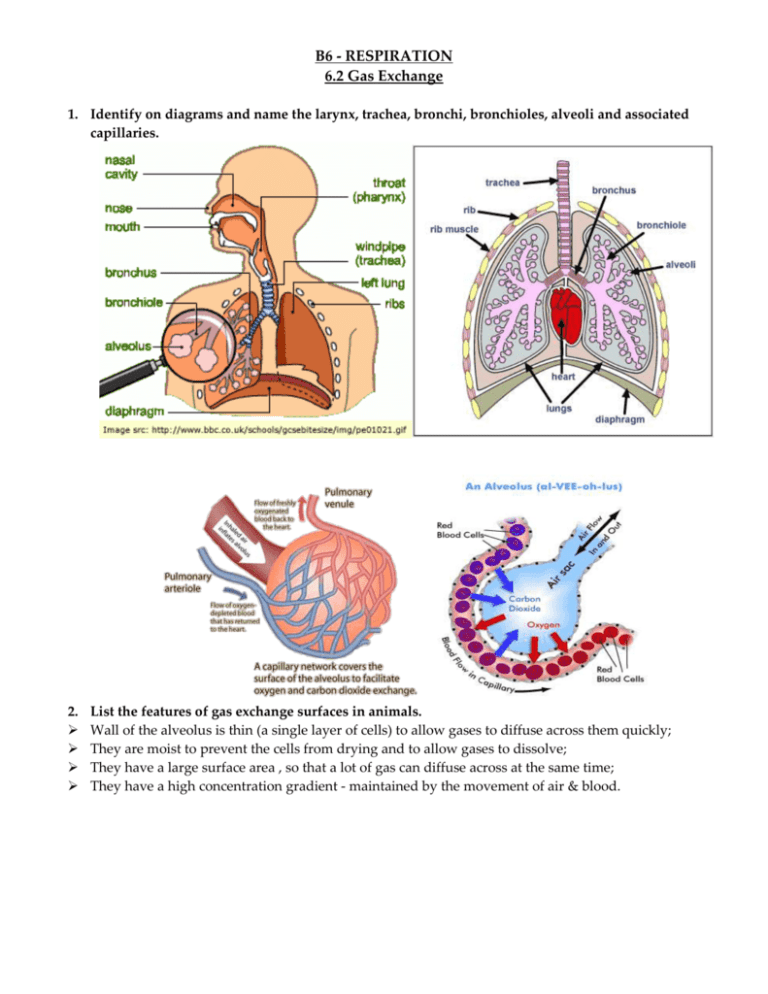
B6 - RESPIRATION 6.2 Gas Exchange 1. Identify on diagrams and name the larynx, trachea, bronchi, bronchioles, alveoli and associated capillaries. 2. List the features of gas exchange surfaces in animals. Wall of the alveolus is thin (a single layer of cells) to allow gases to diffuse across them quickly; They are moist to prevent the cells from drying and to allow gases to dissolve; They have a large surface area , so that a lot of gas can diffuse across at the same time; They have a high concentration gradient - maintained by the movement of air & blood. 3. Explain the role of mucus and cilia in protecting the gas exchange system from pathogens and particles. Air Diagram of lining of trachea The lining contains two kinds of cells: Goblet cells and ciliated cells; Goblet cells make sticky, slimy mucus; Many of the bacteria in the air and dust particles get trapped in the mucus; Ciliated cells have tiny, microscopic hair on them called cilia; The cilia beat in unison, and sweep the mucus upwards, towards the back of the throat. 4. Describe the effects of tobacco smoke and its major toxic components (tar, nicotine, carbon monoxide, smoke particles) on the gas exchange system. Chemical Carbon monoxide Nicotine Smoke particles Tar Effects on gas exchange system A poisonous gas; combines with hemoglobin in RBC, preventing them from transporting oxygen Addictive; increases heart rate & blood pressure Irritate the air passages, causing inflammation & increased mucus production, resulting in chronic bronchitis; coughing and the presence of particles in the alveoli can lead to emphysema (breaking the walls of the alveoli) A carcinogen - increases the risk of lung cancer; lines the air passages, increasing mucus production and paralyzing and damaging cilia, causing bronchitis. 5. State the differences in composition between inspired and expired air. Gas Nitrogen Oxygen Carbon dioxide Water vapour Inspired air % 79 21 0.04 Variable Expired air % 79 16 4 Saturated Explanation Not used or produced by body processes Used up in the process of respiration Produced in the process of respiration Produced in the process of respiration, moisture evaporates from the surface of the alveoli 6. Use lime water as a test for carbon dioxide to investigate the differences in composition between inspired and expired air. IGCSE Biology (Jones & Jones), p. 122, activity 9.5 ‘comparing the CO2 content of inspired & expired air’. 7. Investigate and describe the effects of physical activity on rate and depth of breathing. 8. Explain the effects of physical activity on the rate and depth of breathing. The volume of air breathed in and out during normal, relaxed breathing is about 0.5 litres (the tidal volume); The breathing rate is about 12 breaths per minute; During exercise, the volume inhaled (depth) increases to about 5 litres ( depending on the age, sex, size and fitness of the person); The maximum amount of air breathed in and out in one breath is the vital capacity; The breathing rate can increase to over 20 breaths per minute; The total lung volume is greater than the vital capacity because some air always remains in the lungs (otherwise the lungs would collapse and the alveoli walls would stick together) Breathing rate and depth increase to absorb more oxygen for the muscles as exercising muscles need to respire more to get more energy.


